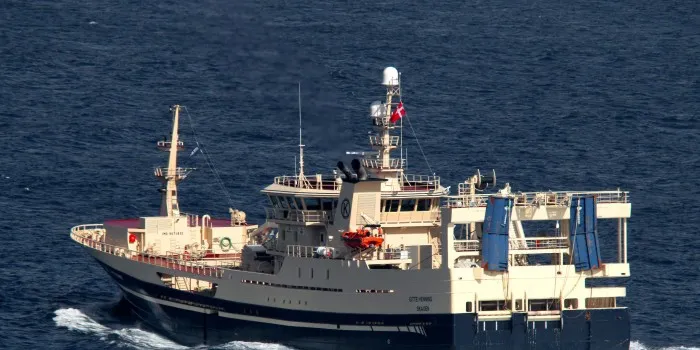Skagen has high hopes for new pelagic vessel
The Danish pelagic fleet’s new flagship, the Skagen-registered Gitte Henning S-349, completed a blockbusting maiden trip, landing 3,500 tonnes of blue whiting.

The Danish pelagic fleet’s new flagship, the Skagen-registered Gitte Henning S-349, completed a blockbusting maiden trip, landing 3,500 tonnes of blue whiting.
